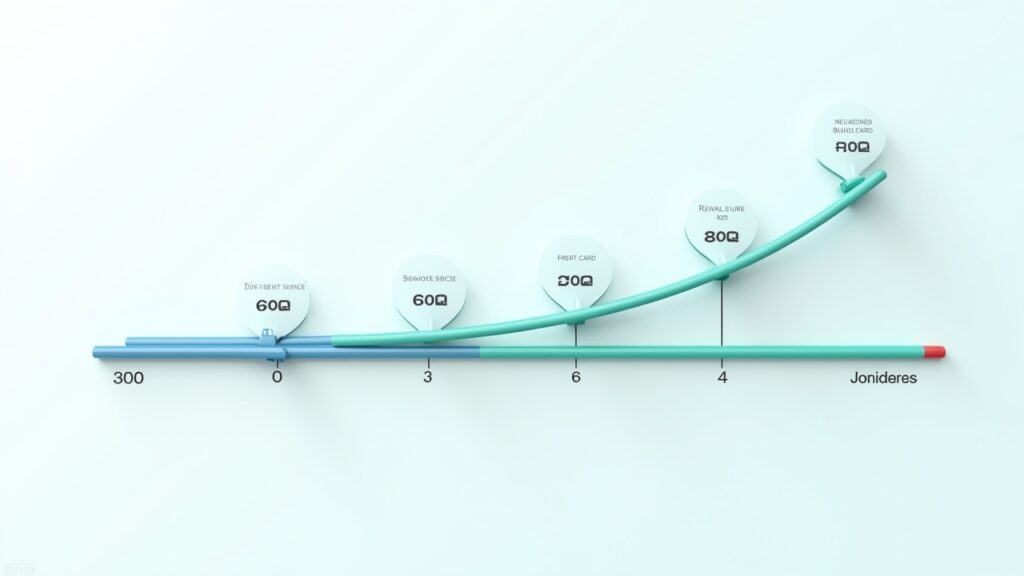Advertisements
Did you know that nearly 30% of Americans have credit scores below 601? I used to be one of them! After a messy divorce and some questionable financial decisions (like financing a jet ski I used exactly twice), my credit score tanked to 485.
That’s when I discovered the world of secured credit cards – and honestly, it changed my life. If you’re trying to rebuild credit or just starting out, understanding the difference between secured and unsecured credit cards is crucial. Trust me, I learned this the hard way.
What Are Secured Credit Cards, Really?

Think of a secured credit card like training wheels for your credit. You put down a deposit (usually $200-500), and that becomes your credit limit. Simple as that.
When I got my first secured card from Capital One, I had to scrape together $300 for the deposit. It stung a bit, knowing that money was just sitting there. But here’s what nobody told me – that deposit was actually protecting me from myself!
The bank holds onto your deposit as collateral. If you don’t pay your bill, they keep it. Pretty straightforward, right?
Unsecured Credit Cards: The “Normal” Cards
Unsecured cards are what most people think of when they hear “credit card.” No deposit required – the bank just trusts you’ll pay them back. Ha! After my credit disaster, no bank trusted me with these for a long time.
These cards typically offer better rewards, higher limits, and more perks. My buddy Dave has an unsecured card that gives him 2% cash back on everything. Meanwhile, I was excited my secured card didn’t charge me just to exist.
The thing is, you usually need decent credit (650+) to qualify for these bad boys. When I finally graduated to an unsecured card after 18 months of responsible use, I felt like I’d won the lottery!
My Real Experience: Starting From Rock Bottom
After my credit imploded, I applied for five different unsecured cards. Got rejected by all of them – talk about a confidence killer! The rejection letters all said the same thing: “insufficient credit history” or “credit score too low.”
So I bit the bullet and got that secured card. The application process was surprisingly easy – they approved me instantly online. Even with my terrible score!
For six months, I used it for small purchases like gas and groceries. Always paid in full, always on time. My credit score slowly crawled up from 485 to 580. Not amazing, but progress!
The Hidden Costs Nobody Mentions
Here’s something that caught me off guard – fees! My first secured card had a $39 annual fee, which seemed unfair since they already had my deposit. Some cards charge monthly fees too (avoid those like the plague).
Interest rates on secured cards are usually higher than unsecured ones. Mine was 24.99% APR, which didn’t matter much since I paid in full each month. But if you carry a balance? Ouch.
One sneaky thing: some secured cards don’t report to all three credit bureaus. Make sure yours reports to Experian, Equifax, and TransUnion. Otherwise, what’s the point?
When to Choose Each Type
Go with a secured card if:
– Your credit score is below 600
– You’ve never had credit before
– You recently went through bankruptcy
– You want to rebuild credit safely
Choose an unsecured card if:
– Your credit score is 650 or higher
– You want rewards and perks
– Need a higher credit limit
– You don’t want money tied up in a deposit
Sometimes I wish I’d started with a secured card earlier, before my credit went to hell. Could’ve saved myself a lot of grief!
Tips That Actually Worked for Me
Set up automatic payments! I can’t stress this enough. One missed payment can undo months of progress.
Keep utilization under 30%. On my $300 secured card, I never charged more than $90 per month. The credit bureaus love this ratio – learned that from a helpful banker at my local branch.
Don’t close your secured card too quickly. I made this mistake with my first one and my score dropped 40 points! Keep it open even after you get unsecured cards. That credit history length matters.
Making the Jump to Unsecured

After about a year with my secured card, something magical happened. Capital One sent me a letter saying I qualified to upgrade to an unsecured card – and they’d return my deposit!
But here’s the kicker: not all secured cards offer this graduation path. Some you have to close and reapply for an unsecured one. Ask about this before you apply – wish someone had told me that.
When I finally got my first “real” credit card again, the limit was only $500. But man, it felt like freedom! No deposit tying up my money, and I even got 1.5% cash back on purchases.
Your Credit Voyage Begins Today
Whether you’re rebuilding like I was or just starting out, remember that credit is a marathon, not a sprint. Secured cards might feel like a step backward, but they’re really a stepping stone forward.
The most important thing? Just start somewhere. That secured card that felt embarrassing at first became my ticket back to financial normalcy. Now, three years later, I’ve got a 720 credit score and several unsecured cards with great rewards.
Want more tips on rebuilding your credit or managing your finances? Check out other helpful guides at The Clear Cents. We’ve all been where you are, and we’re here to help you navigate your way to better credit!




[…] And hey, if you need more tips on budgeting, saving, or just surviving financially, check out other posts at The Clear Cents. We’re all in this together, fighting for our financial freedom one dollar […]